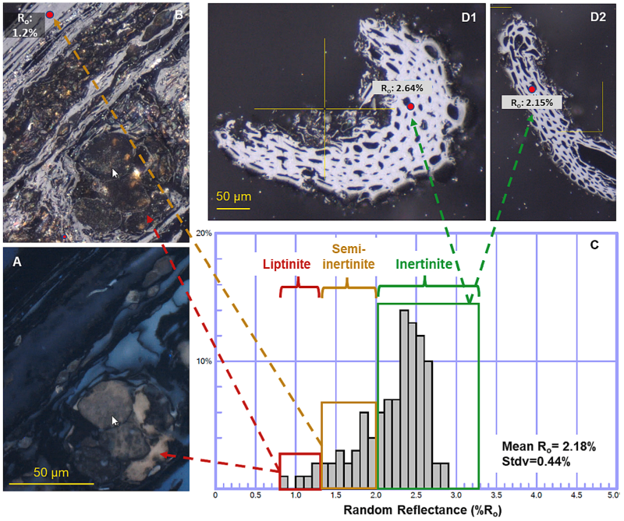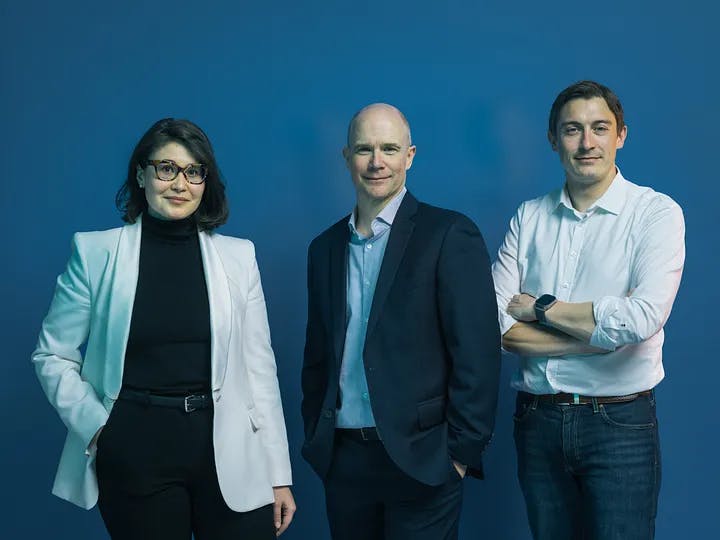The Benefits of Carbon-Negative Concrete made with Biographite® Carbon
Imagine a world where concrete — a cornerstone of modern construction — becomes a tool to combat climate change. At Carbo Culture, we’re making this a reality today.

Concrete is the foundation of modern construction. It’s used to build everything from skyscrapers to sidewalks. But its environmental impact is staggering. The production of cement, a key ingredient in concrete, accounts for nearly 8% of global CO₂ emissions. (source)
At Carbo Culture, we’re rewriting this story. By integrating our Biographite® carbon into concrete, we’re creating a material that reduces emissions and actively stores carbon. The safety and permanence of this method for carbon removal can be read more in a position paper by Biochar Europe (source). As a result, we’re able to produce carbon-negative concrete, which is strong, conductive and better for the planet.
In this article, we’ll share the journey behind this innovation from the science of replacing cement with biochar to how we’ve engineered carbon-negative concrete. We’ll also highlight new applications for conductive concrete, such as accelerated curing, heated sidewalks, and cold-weather pours, and showcase real-world results from our pilot project. Together, these breakthroughs represent a significant leap toward sustainable construction.
Benefits of Carbo Culture’s Biographite® carbon in concrete
Integrating biochar into concrete benefits both the environmental and construction performance:
- Carbon Storage: Biochar locks away carbon for thousands of years. For every ton of concrete, we can include enough biochar to turn it into a carbon-negative material.
- Enhanced Strength: Our tests show that substituting 10% of cement with biochar can increase compressive strength by 10-30%, improving the performance and durability of the concrete.
- Sustainable End-of-Life: Concrete is often recycled at the end of its life. In this way the carbon of the embedded biochar remains safely stored. This ensures long-term climate benefits with minimal risk of reversal.
- Conductivity for Accelerated Curing & Heating Applications: The electrically conductive properties of biochar allow concrete to generate heat internally when a current is applied. This significantly accelerates curing times and enables energy-efficient heating in structures like heated floors and sidewalks. As a result, it provides both sustainability and cost savings.
These benefits make biochar-enhanced concrete a game-changer for construction, offering a practical, scalable solution to one of the world’s most pressing carbon challenges.

Biochar improves the compressive strength of concrete and reduces its carbon footprint
One of the most critical performance characteristics of concrete is its compressive strength, which determines how well it can bear heavy loads without failing. Through our research and testing with researchers from Politecnico di Torino, we’ve discovered that incorporating Carbo Culture’s Biographite® material into concrete enhances its mechanical properties.
When we replaced 10% of the cement in a mortar mix with our Biographite® product, we observed an impressive 20-30% increase in compressive strength. This enhancement makes biochar-infused concrete more robust. Consequently, it improves its performance in applications that require high strength, such as building foundations and structural elements.
In addition, we found this is possible with biochar made from different raw materials, enabling the use of locally available supply. This demonstrates that this solution can scale, can be applied anywhere, and can reduce variability in the end-product performance.

In this scenario, assuming a 1-ton mixture of concrete, we replace 10% of cement with biochar, which stores approximately 45 kg of CO2. Consequently, it reduces the embodied emissions of the concrete mix by 40%.

The carbon footprint of the aggregates used within concrete, such as sand and rock, is small. But we wanted to push the envelope further and obtain a concrete mix with negative embodied carbon. To do this, we have to store carbon, not just reduce emissions. Leveraging the increased strength provided by the biochar and cement mix, we substituted 5% and 10% of the concrete aggregate with biochar processed to look and feel more like the aggregate. The final sample had a compressive strength performance similar to the control.

Because aggregate makes up a larger portion of the concrete, replacing a smaller percentage will have a bigger impact on the amount of carbon stored. Here, a 10% rate means adding 31 kg of biochar, which stores an additional 94 kg of CO2. This demonstrates carbon-negative concrete with a net carbon footprint below 0.

Innovative Applications
The incorporation of Carbo Culture’s Biographite® material into concrete goes beyond reducing emissions. It enables a range of innovative applications that can revolutionize construction processes and improve the functionality of concrete in various environments.
Accelerated Curing
Traditionally, concrete curing can take 24-48 hours at room temperature before a precast concrete part can be demolded or before it can be walked on. By leveraging the conductive properties of Biographite® materials, we can pass an electrical current through the concrete. The current generates heat, which accelerates the curing process. In our testing, we were able to demold concrete with a 24 h working time within 2 hours. This innovation is reducing curing times by 10x compared to conventional methods. This acceleration speeds up construction and increases efficiency in precast concrete plants, enabling faster production.
Heated Flooring
Heated flooring systems typically require complex setups, such as hot water pipes or mats that need to be installed under the concrete. In concrete infused with Biographite® materials, we simplify that process. We can create an efficient, cost-effective, and sustainable heating system by connecting simple wires to the concrete. The conductive nature of the biochar allows for even heat distribution throughout the floor, providing an energy-efficient alternative to traditional heated floor systems.
Cold Weather Pours
Pouring and curing concrete in cold weather can be challenging, as concrete needs to remain above 10°C to properly cure. This means that pouring and curing concrete is nearly impossible for many countries during the winter. However, a block of concrete that uses conductive biochar could be heated after being poured. This innovation makes construction possible year-round, even in extreme climates, helping to avoid costly delays and keep projects on schedule.
Proof of Concept: Pilot Plant Results
To validate the potential of carbon-negative, conductive concrete, we carried out a pilot project at our facility in Kerava, Finland. This proof of concept was designed to demonstrate that our Biographite® product can be effectively used in concrete at scale, with an emphasis on the following key objectives:
- Build with carbon-neutral concrete
- Demonstrate that conductivity can be used to accelerate curing
- Use existing equipment and processes

Pilot Plant Results:
In our pilot tests, we produced 0.5 cubic meters of conductive, carbon-neutral concrete across five separate pieces, utilising standard industry equipment. The process was designed to mimic real-world conditions, ensuring that we could demonstrate the scalability and practical application of our technology.
Carbon-Negative Performance:
We created carbon-negative concrete by replacing 10% of the cement and 6% of the aggregate with Biographite® biochar. This design reduced typical emissions by approximately 10% and stored 150 kg of CO2, bringing the whole mix to a net -30 kg of CO2 emitted for the 1100 kg of concrete poured.
Accelerated Curing with Conductivity:
A standout result from our pilot was the accelerated curing time. The conductive properties of the biochar allowed us to pass an electric current through the concrete, generating heat internally. This innovation reduced the curing time of one sample from the typical 24 hours to just 2 hours. This benefit could lead to increased throughput and cost savings for manufacturers, especially in precast concrete production.
Real-World Validation:
The entire project was handled with common and typical construction equipment. Our biochar was post-processed using industrial grinding equipment. We purchased off-the-shelf concrete and mixed our biochar additives with a standard electric cement mixer. A common concrete vibrator was used to release any trapped air bubbles. Trowels and brushes were used to smooth and finish the surface of the stairs. We did not require any special equipment or processing, making this a drop-in solution that is built to scale.
Acknowledgements
We would like to extend our gratitude to the German Federal Agency for Disruptive Innovation, also known as SPRIND. Their support has been instrumental in bringing this proof of concept to life and demonstrates the power of collaborative innovation in tackling climate challenges.

Paving the Way for a Sustainable Construction Future
We have shown that while reducing the climate impact of cement we can also enhance the strength of concrete and unlock the potential for conductive applications. We are not only helping to address the climate crisis but also driving efficiency and innovation in the construction industry.


